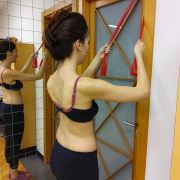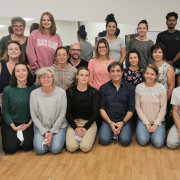SEAS in short: quick data, courses and future
SEAS (Scientific Exercise Approach to Scoliosis) is one of the few approaches to scoliosis treatment based on specific exercises. It has spread worldwide thanks to training events organised for years on all five continents.
What is SEAS, in short? These specific exercises are varied and updated continuously to avoid boredom and stimulate our nervous system and spine more and more with a custom self-correction individualised for each curve.
Some quick data
Since 2010, 272 educational programmes have been implemented, of which 115 in Italy and 157 abroad, which has led to the training of more than 6000 therapists.
“The interest collected, in conjunction with the published scientific evidence that the approach is valid, has prompted us to accept the increasing demands for the training of local teachers who started to programme more capillary courses in different countries,” explains Michele Romano, Director of Isico physiotherapy and head of SEAS courses “This has allowed us to divert efforts even to geographical areas where we were not yet able to bring our approach”.
Participants accredited since 2011 in courses abroad: https://en.isico.it/seas-participants-accredited-since-2011/
SEAS versus Schroth
A primate of diffusion that SEAS shares with another method, the Schroth, born in Germany at the beginning of the last century: both are recognised as reliable by the International Society on Scoliosis Orthopaedic and Rehabilitation Treatment (SOSORT) but present non-secondary differences. One of these is the ease of learning and performing the exercises, as well as the active correction that patients learn to practice.
In Schroth, the active alignments of the column, which therapists teach the hearing patients, are characterized by considerable difficulties in execution and, above all, the objective and complex execution of the program at home, which the classic protocols provide but which is difficult to perform without the support of the therapist.
In a study published this year, the authors interviewed 173 professionals who treat scoliosis using the Schroth method in Europe and America. 52% of these operators declared to use a different method in combination, and in 37.9% of cases, the different approach is SEAS.
That is why an increasing number of physiotherapists trained with Schroth integrate the classic treatment with SEAS exercises to help the less skilled patients while adhering to a treatment that lasts for years.
One of the main obstacles to continuing these treatments is the boredom caused by the repetitiveness of a small group of exercises, which patients perform throughout the therapy.
The many therapists who apply Schroth try to overcome the weaknesses of the first method by teaching the most straightforward and most dynamic SEAS exercises.
In Isico centres in Italy, SEAS provides learning sessions ranging from 60 to 90 minutes, with monthly, bimonthly, or quarterly frequency, depending on the treatment phase. After these sessions, patients can perform the exercises on their own at home. This significantly reduces costs by combining quality (learned at the Isico Centres) with convenience (exercises at home or close to home).
SEAS: the near future
“In the future, we will anticipate the training of other local teachers that will cover increasingly large areas of the globe,” concludes Romano, “and will spread more and more SEAS treatment.”
Isico will be engaged in the design of rehabilitation facilities in different continents dedicated to the application of SEAS, so that there can be trained specialists on site who take care of an increasing number of patients.











Leave a Reply
Want to join the discussion?Feel free to contribute!